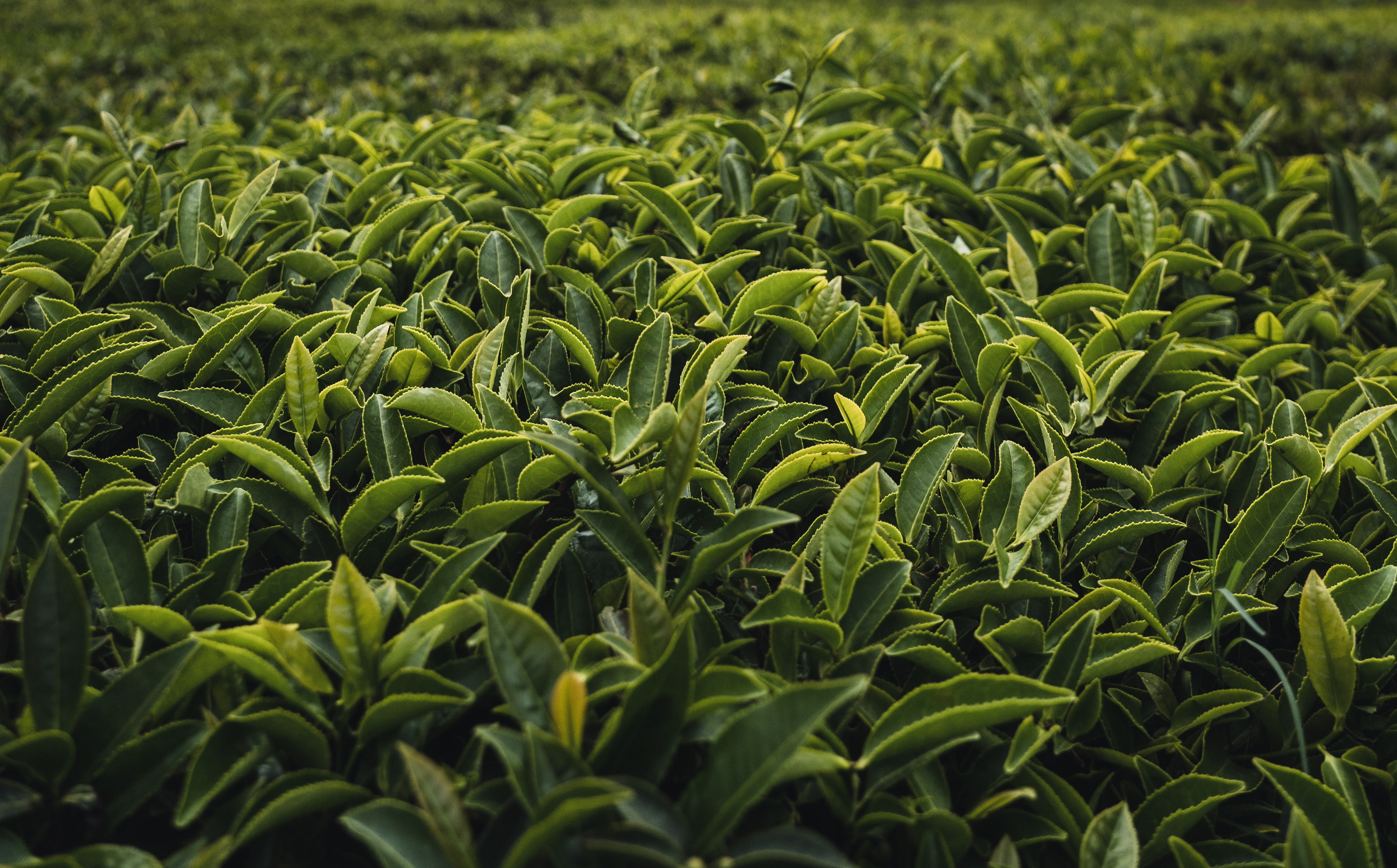
Of all the small joys in life, sipping on a hot cup of freshly brewed tea at the end of the day is at the top of the list. Nothing beats savoring a warm cuppa of deliciousness in the morning.
Tea, a beloved beverage amongst many, is one of the most versatile and commonly used drinks around the world. It not only makes for a great beverage in all the seasons but comes with a host of benefits
However, there's a lot more to your morning cuppa than just a humble ‘chai ka kulhad’. Depending on the cultivation region and production methods, tea can be classified into different categories ranging from the classic 'true teas' varieties to spiced teas to herbal and floral tisanes.
With endless choices comes confusion. So if you’re looking to expand your tea-drinking palate, we've curated a tea guide to help you understand the basics of tea.
True Teas
"True Teas", a term any tea connoisseur would be well-versed with. The world of tea can get a little selective and therefore, not all teas carry the label of “true teas". In fact, herbal teas, floral brews, and spiced teas are actually referred to as infusion or tisanes in the world of tea. Only the teas that are made using leaves from the tea plant known as Camellia sinensis are called true teas. Therefore, technically, the only true teas are green tea, white tea, oolong tea, and black tea. Let’s take a look at the exclusive members of the “true” tea club. 
White Tea
White tea is the least processed of the true teas with an incredibly light oxidation level. To make this delicate tea, baby buds/leaves of the tea shrubs are harvested which are then slowly and methodically dried outdoors in natural sunlight to reduce moisture until the delicate flavor and aroma are achieved. Primarily, white teas are cultivated in the Fujian province of China.
Due to the delicate processing of the leaves, white tea features a unique, sweet aroma and a smooth, fresh flavor. While the flavor profile is similar to green tea, white tea is typically creamier, sweeter, and more delicate than green tea. However, its precise flavor varies from region to region and the oxidation method. For instance, less-oxidized white teas tend to be bright, fruity, and herbaceous, while more-oxidized brews have earthy, nutty, and spicy afternotes. A great addition to your tea repertoire, White teas are easy to steep as it doesn’t become bitter or astringent easily.
Some of the benefits of white teas are
- Helps reduce cholesterol levels
- Rich in antioxidants
- Helps lower stress
- Helps boost metabolism
- Promotes healthy skin and bones
- Helps strengthen the immune system
Green Tea
Green tea leaves are harvested from young tea shrubs and do not undergo an oxidation process. However, they do undergo multi-step processing. Green tea leaves are harvested and then withered to reduce moisture content. To neutralize the oxidation process, the tea leaves are subject to intense heat by firing the tea either by pan-frying or steaming it at high temperatures to induce drying. Both the firing methods produce strikingly different flavors. The pan-fired green teas have a roasted, nutty flavor, while the green teas are steamed to preserve the vegetal and herbaceous flavors of the tea leaves.
Most green teas are lighter teas with a natural green hue. The refined firing process gives the tea a more delicate, fresh, and somewhat grassy flavor to go along with its paler appearance. To keep your green tea from tasting astringent, steep it at a lower temperature for a shorter amount of time.
Along with relishing its refreshing flavor, sipping a cup of green tea every day can also help
- Relieve physical and mental stress
- Improve digestion
- Reduced headaches
- Aid weight loss
- Boosts immunity
- Rejuvenate body and mind
Oolong Tea
Revered in Asia for its multiple health benefits, Oolong tea is a semi-oxidized tea that is stronger than white tea, but milder than black tea.
Once the tea leaves are harvested, they undergo a process of withering, rolling, mild oxidation, and drying. Oolong tea leaves also undergo a mild fermentation process that is stopped early by applying heat to the leaves.
Crafted mostly in China and Taiwan, flavor profiles of oolong teas vary drastically depending upon the region, soil composition, sunlight, rainfall, and geographic conditions of the tea plant. Deep amber or light green in color, Oolong tea is a medium-bodied tea with a floral flavor and a smooth finish along with sweet, grassy, or toasty notes.
A cup of oolong tea helps
- Improve heart health
- Prevent cancer
- Improves metabolism
- Aids with weight management
- Rich in antioxidants
Black Tea
A staple in Indian kitchens, Black tea is cherished for its bold and robust flavor and strong aroma. Black tea is the strongest and boldest of the true tea. The brew owes its rich dark color to its oxidation and harvesting process.
Black tea leaves are harvested, withered, fully oxidized, and dried for a long time. This high oxidation level is black tea’s defining feature, giving it both its robust flavor and strong aroma. The standard flavor profile of black tea is described as a bold, full-bodied flavor, with afternotes of maltiness or fruitiness complemented by a brisk finish and earthy aroma.
Although tea was first grown in China, black tea is now a staple of India where the tea masters have mastered the art of crafting black tea using the CTC (Cut, Tear, Curl) processing method and expertly blending it with other herbs and spices to curate classic tea like masala chai and earl grey. The best way to bring out black tea’s bold flavor is to pour boiling water and allow the tea to steep for long.
Black tea helps
- Lower the risk of heart attacks
- Lower cholesterol levels
- Boost immunity
- Prevent cold & cough
Herbal Tisanes
A herbal tisane, or herbal infusion, is a brew made without using any leaves from the Camellia sinensis plant. Although not tea in the truest sense of the word, herbal infusions are similar to regular tea as it involves steeping earth ingredients in boiling water to create a delicious, healthy, and flavorful beverage.
These teas are generally caffeine-free and can be made using herbs, spices, or dried botanicals such as flowers, barks, fruits, herbs, spices, roots, berries, seeds, etc. Although herbal tea can feature just one of these ingredients, it often combines different botanicals mixed with tea leaves for a unique blend. As herbal teas are mostly made from caffeine-free ingredients, they are a great beverage to enjoy before bed. So examples of common herbal tisanes include rose petal infusion, lemongrass infusion, chamomile tea, mint infusion, etc.
The flavors of herbal tisanes are largely dependent on the plants and spices used. For floral tisanes such as rose or hibiscus, sweet, gentle flavors can be experienced. Alternatively, citrus tisanes such as lemongrass or bergamot offer a fresh, citrusy flavor with a refreshing aroma. Root teas such as ginger or ashwagandha infused brews boast earthy and spicy notes with strong aromas.
Ready to enter the world of teas filled with enticing aromas and pleasing flavors? Whether you stick to true teas or opt for herbal tisanes, the flavors and aromas to choose from are endless. But to start with, check out Butterfly Ayurveda's wide range of Ayurveda-inspired teas, infusions, and tisanes that are full of flavor and health benefits!

Comments (0)
Back to News